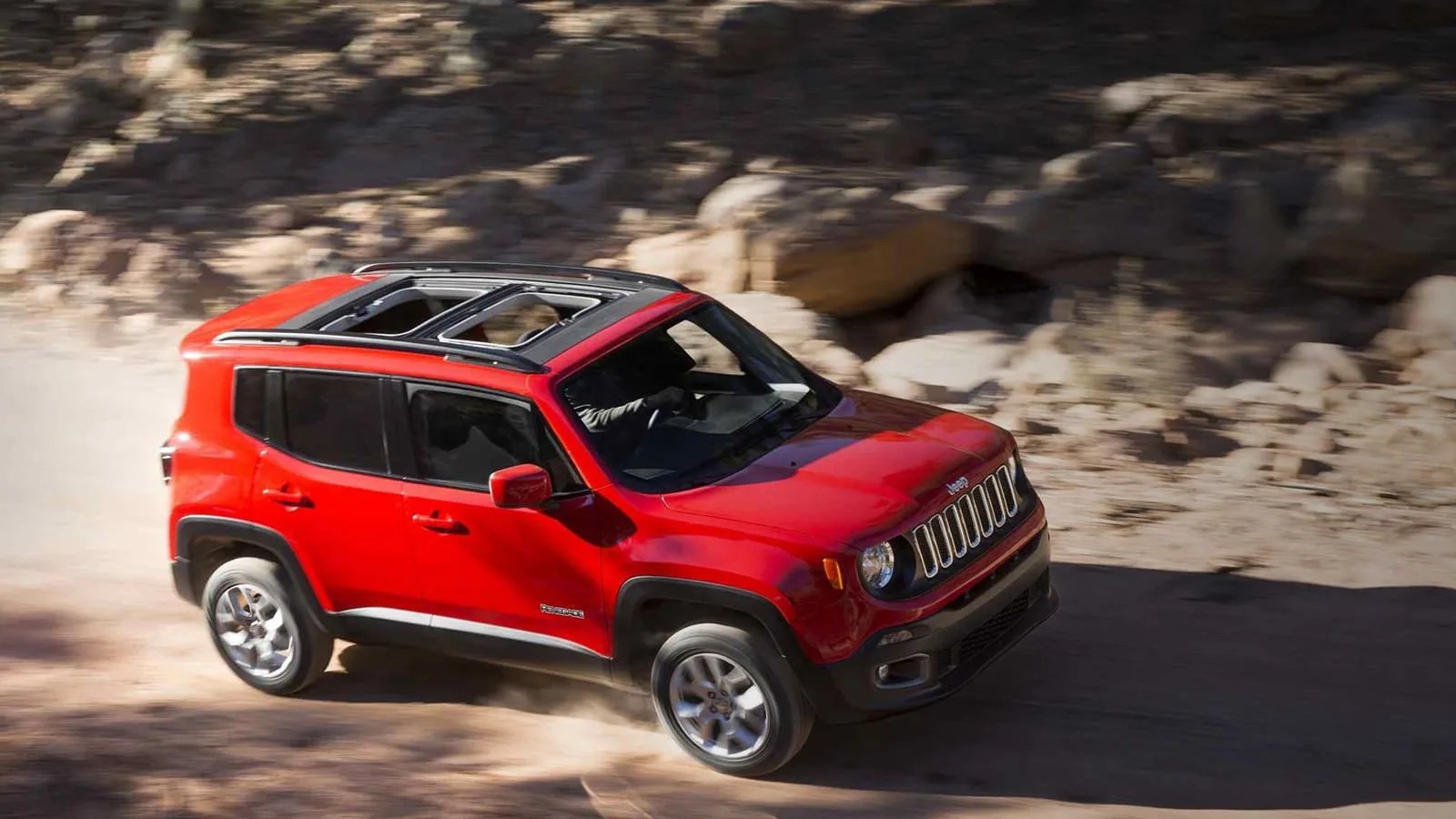Jeep, just like Ferrari or Jaguar, has always been one of those storied automotive brands that struck a chord with enthusiasts, especially Americans. Unlike Ferrari or Aston, though, Jeep’s price of entry has always been reasonable, if not downright affordable. Things have stayed relatively simple, too. Want a “real” Jeep? Buy a Wrangler; it’s been the same for decades. However, if you’re intrigued by the Jeep mythos but have a more practical mentality, the open-top Wrangler seems a bit too brash and impractical for everyday use. Sure, there’s the sub-$20,000 Compass and Patriot, but they’ve always been a bit uninspired and unworthy of the Jeep badge; they’re more Jeep in name than in spirit. That’s where the 2015 Jeep Renegade comes in — a small CUV that actually lives up to the Jeep nameplate.
Off the bat, the Renegade almost seems like another niche vehicle that was designed to sell itself by way of brand nostalgia, just like the Mini Cooper or Fiat 500. Based on Fiat-Chrysler’s “small-wide” chassis, the Renegade even shares its underpinnings with the 500L. Base models are even front-wheel-drive. But consider this: an AWD model of the Renegade has 7.9 inches of ground clearance, while the FWD models only have 6.7 — and if you up the ante with the Trailhawk version (which you should), that increases to 8.7 inches, giving the Renegade an overall break-over angle of 25.7 degrees, a significant amount more than the Cherokee Trailhawk, Compass or Patriot and on par with a Wrangler. 4 x 4 Renegade models also get Jeep’s Selec-Terrain system with snow, dirt and mud modes, and an extra “rock” mode in the Trailhawk version. And yet another reason to spring for Trailhawk trim is the addition of front tow hooks, skid plates and beefy tires.
While that may not seem entirely groundbreaking, consider that the Renegade is a “b-segment” car: a compact city runabout that’s more likely to tackle snowy Northeast streets than certain sections of Moab. What’s amazing about the Renegade is that it offers up genuine off-road ability with its small size — something no other car in this segment offers. The closest competitors the Renegade has are the Mini Countryman, Nissan Juke and Subaru XV Crosstrek, but none of those have the same off-road equipment and off-road geometry. The Renegade is ideal for city dwellers who like to get out into no-man’s-lands every once in a while — people who demand the compact size of a b-segment car with the ruggedness that a Jeep can provide. Sure, there are compromises; the Renegade wouldn’t be able to traverse the Rubicon (only a fool would believe that). But weekend duty out in the sticks with some camping gear and a bandana’d golden retriever? The Renegade was made for that.
Off-road capability aside, the new Renegade shows that Fiat-era Chrysler isn’t going soft on the Jeep brand. Design-wise the new Renegade is an entirely new and bold direction for Jeep. The brand’s iconic slotted grille and round headlights work well with its small, boxy profile, almost reminiscent of funky, older off-roaders like the Suzuki Samurai or Isuzu Vehicross. Other small design details like the X’s (meant to imitate rear mounted “jerry cans” on military Jeeps) etched into the taillight design and square and masculine wheel arches add to the Renegade’s unapologetic Jeep-ish panache. On the inside, interior touches like aluminum inserts, a thick steering wheel and chunky dials and buttons indicate that Chrysler has long left its low-quality Daimler years in the dust.
At the end of the day, the Renegade is a lot of great things for the auto-buying public. It’s a small, entry-level Jeep that doesn’t feel like a half-hearted attempt at a CUV like the Compass or Patriot; it’s a stylish, small city car that’s projected to get somewhere over 30 mpg in the city (numbers for AWD models will likely be just shy of that number); and it’s a truly small off-roader for the active city set. All at a price that should start around $20,000.
